1940s-1950s
Children in the 1940s had much more sophisticated musical toys than those just a decade earlier. It was a golden era for musical tinplate toys and noise makers. Particularly popular were the lithographed tinplate windup (mechanized) toys and even an electric toy record player. Nevertheless, by the end of WWII tinplate toys began to decline and by the late 1950s plastic and diecast metal came into vogue as the materials of choice for toymakers. It was also during this time the process of exploring and learning string instruments began to take hold as plastic toy guitars became available.
LITHOGRAPHED TINPLATE WINDUP (Mechanized) MUSICAL TOYS
During the late 1880s, the first windup (mechanized) tin toys were created and mass-produced by European toy makers. Over the next 70-80 years they became more precise, intricate, and animated in design. In the US, the most successful toy manufacturer was Louis Marx & Co., founded in New York City in 1919. Marx produced many of the musical tinplate windup toys in America during the 1940s. He listed six qualities he believed were needed for a successful toy: familiarity, surprise, skill, play value, comprehensibility, and sturdiness.

‘Violin Player’
Linemar
Japan
Metal
1940s
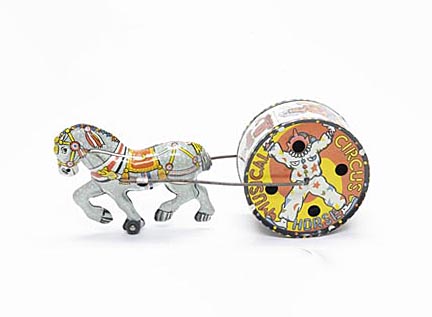
‘Circus Horse’
Louis Marx & Co.
New York, NY
Metal
1940s

L’il Abner ‘Dogpatch 4’
Unique Art Mfg Co.
Newwark, N.J.
Metal
1945

‘Jolly Chimp’
Daishin
Japan
Metal, fiber
1950s

‘Popeye Getar’
Mattel, Incorporated
Los Angeles, Calif.
Metal, plastic, wood, fiber
1958
Plays: ‘Popeye The Sailor Man’ Theme Song

‘Jolly Jack’
Lorraine Novelty Mfg Co.
Bridgeport, Conn.
Metal, fiber
1950s
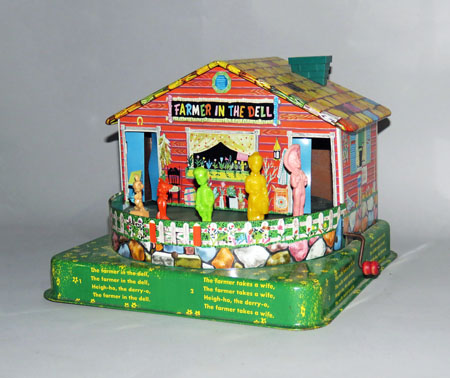
‘The Farmer In The Dell’
Mattel, Incorporated
Los Angeles, Calif.
Metal
1953
Plays: 7 Verses of ‘The Farmer In The Dell’

‘Tin Toy Phonograph No. 777’
Lindstrom Corp
Bridgeport, Conn
Metal
1948
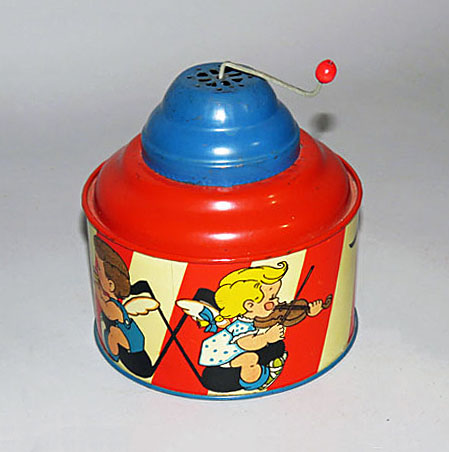
‘Music Maker’ Toy #147
Ohio Art Company
Brian, Ohio
Tin with Lithographs
1940s
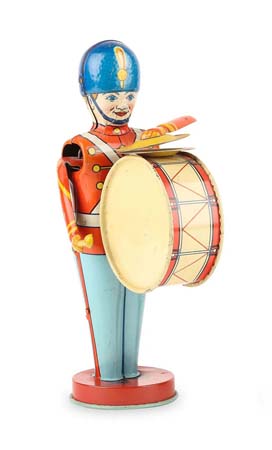
‘Bass Drummer’
J. Chein and Co.
New York City, NY
Metal
1950s
Clockwork motion and fixed key
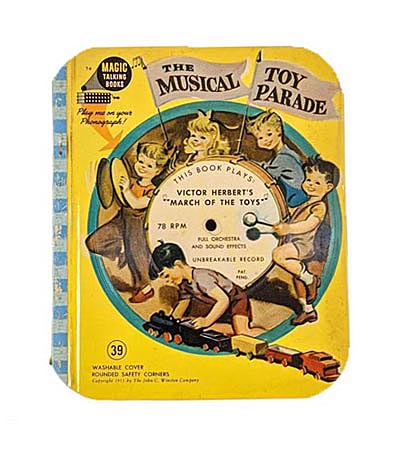
‘Musical Toy Parade’
John C. Winston Co.
Paper, plastic
Philadelphia
1955
Front cover of book is an actual record.

‘Tenor (Snare) Drummer’
J. Chein and Co.
New York City, NY
Metal
1950s
Clockwork motion and fixed key

Spinning Top
Walt Disney Snow White & The 7 Dwarfs
J. Chein and Co.
New York City, NY
Metal & Wood
1940s
FREE-REED HORNS
During the 1940s free-reed horns/toys made in the shape of a saxophone/trumpet/trombone were popular for the young toddlers, who only had to blow into a mouthpiece and push a key/valve. A free-reed involves air flowing past a vibrating reed within a frame, much like a harmonica. They ranged from three to eight valves/keys and multiple keys could be pushed for multiple sounds at the same time.

‘Camp Saxo’ – 4 Valves
France
Metal
1940s

Trombone – 8 Valves
France / Deposee
Metal
1940s
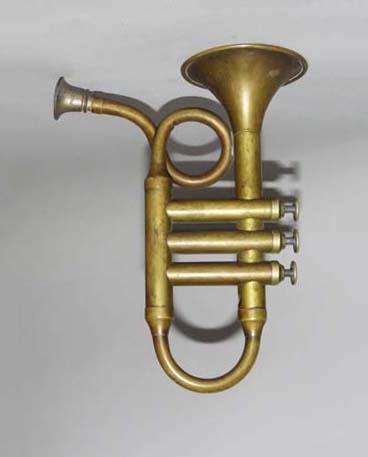
Trumpet – 3 Valves
Marked: France
Metal
1920s
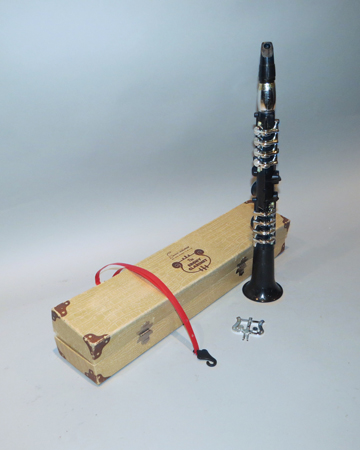
‘Ebony Clarinet’
Emenee, Flushing, NY
Plastic
1940s
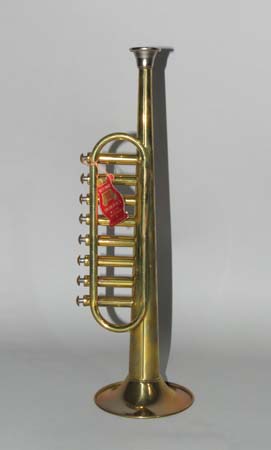
Trumpet – 8 Valves
Made by Delinot
Metal
1940s
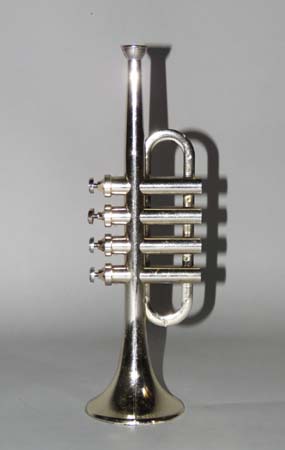
‘Harmotone Jr. Trumpet’
Harmonic Reed Corp.
Philadelphia, Penn.
Plastic
1940s

‘Mickey Mouse Trumpet’
Potenza Picera, Italy
Plastic
1940s

Trumpet
Emenee, Flushing, NY
Plastic
1942

‘Tin Trumpet’
No markings
Metal, plastic
1940s
FREE-REED KEYBOARDS
In the 1950s, Emenee Musical Toys of Flushing, NY, began making the free-reed instruments out of plastic such as, musical keyboard instruments. They were played by pressing a row of levers (keyboard) to activate the sound. For the young children’s small hands and fingers this developed both their hand-eye coordination plus taught a visual-audio connection to how pitches change going up and down the scale on a keyboard.
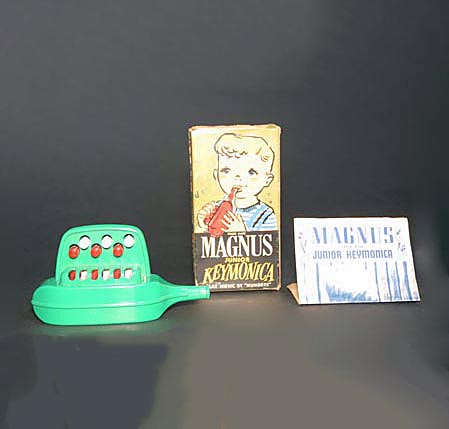
‘Junior Keymonica’
Magnus Harmonica Corp
New Jersey
Plastic
1950s
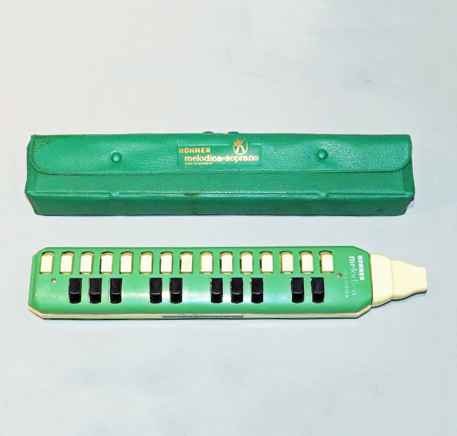
‘Melodica’ – Soprano
Hohner
Trossingen, Germany
Plastic
1958

‘Golden Deluxe Piano Accordion’
Emenee, Flushing, NY
Plastic
1950s
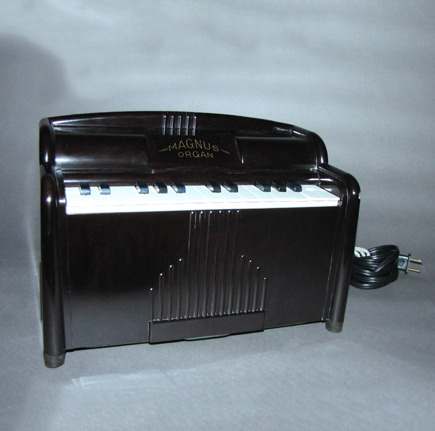
‘Organ’ Model #151
Magnus Harmonica Corp.
New Jersey
Plastic, metal
1950s
TOY GUITARS
The strumming of strings was acknowledged as a stimulating activity that supports motor skills with hand-eye coordination. Toy companies knew this and when they started branding with famous characters (Mickey, Davy Crockett) and famous musicians (Gene Autry, Roy Rogers, & Elvis Presley), they built an introduction to the world of guitars that connected young people to children’s songs, country music, and Rock’n’Roll.
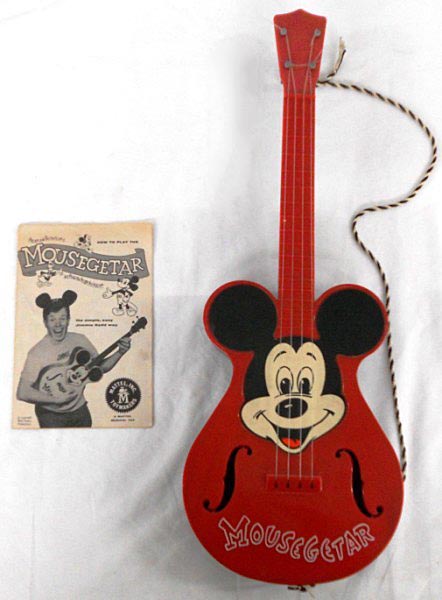
‘Mousegetar’
Based on guitar used by
Jimmie Dodd
“Mickey Mouse Club’ TV
Mattel, Inc.
Los Angeles
Plastic
1950s
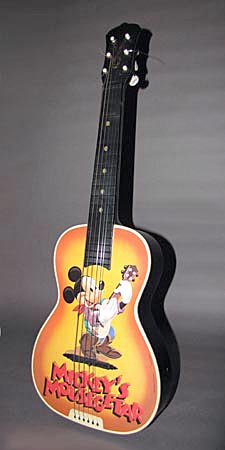
‘Walt Disney’s Official Cowboy MouseGetar’
[6-strings]
Carnival Toys
Peoria, Illinois
Plastic
1950s
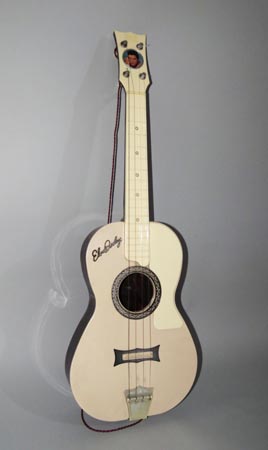
Elvis Presley ‘King of Rock & Roll’ Guitar
Selcol Productions
London, England
Plastic
1956
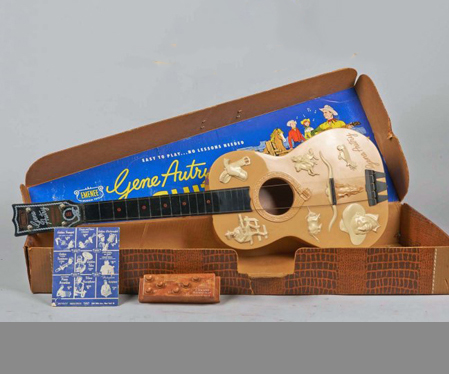
Gene Autry ‘The Singing Cowboy’ Western Guitar
Emenee, Flushing, NY
Plastic
1956
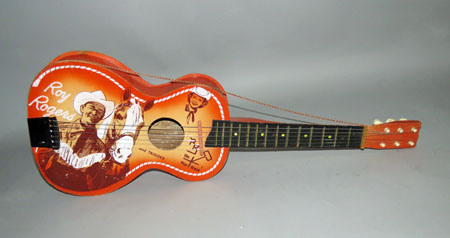
Roy Rogers & Trigger Guitar
– Dale Evans in upper left corner
Jefferson R-70
[6-strings]
Fiberboard
1950s
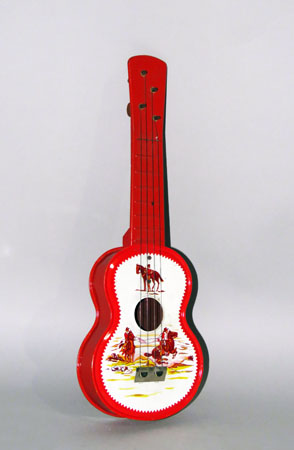
Tin Litho Cowboy Guitar
4-Strings (Metal)
Metal, Wood
1950s

Walt Disney’s ‘Davy Crockett’ Guitar by Peter Puppet
Four-String w/ Original Box and Pick
Wood, Metal
1955
